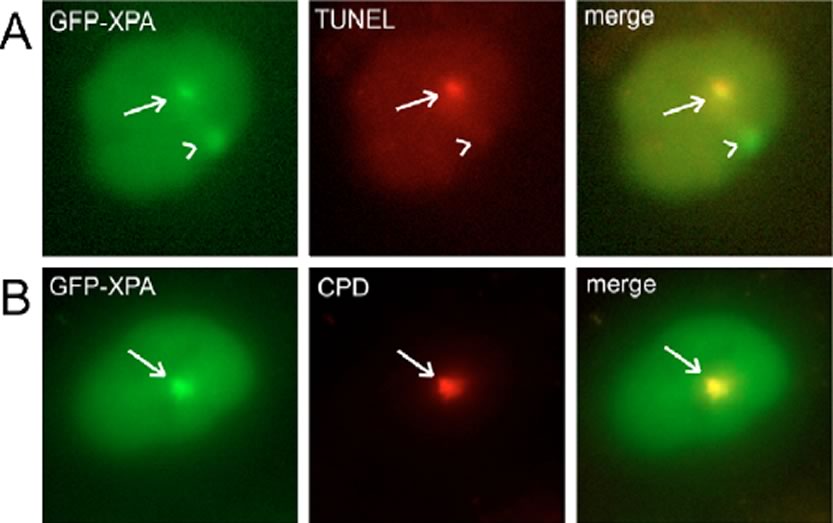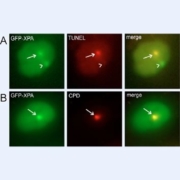DNA damage was induced in cultured living cells by localized 266 nm radiation (sub-nuclear damage induction). GFP tagged repair factor XPA (GFP-XPA) was used as general reporter for an induced DNA damage. Co-localization analysis with specific Markers (TUNEL & CPD) revealed, that different power levels of pulsed UV-C irradiation can induce different kind of DNA damages, and thus activates different repair pathways.
 Figure 1:
Figure 1:
(A) GFP-XPA expressing cells were irradiated with 266 nm either without (arrow) or with attenuation (arrowhead). GFP-XPA accumulates on both areas (green, left panel) whereas TUNEL (red, middle panel) only stains positive on the spot that was created without attenuation. (B) GFP-XPA expressing cells were irradiated by attenuated UV-C laser light (arrow). Presence of CPDs was shown by immunohistochemical staining with CPD (red, middle panel).
Equipment / Setup Components:
- Microscope: Zeiss Axiovert 200M LSM 510
Equipment and Modifications by Rapp OptoElectronic:
- UV-modification: The fluorescence-excitation beam path of the microscope was modified for UV-C transmission (<300nm) by using quartz optics.
- Fix spot laser coupling: For laser manipulation in a fixed position at the center of the field of view.
- UV-C irradiation: A 266 nm pulsed DPSS laser (DPSL-266/2) was used to induce specific DNA damage.
Reference:
Dinant, Christoffel, Martijn de Jager, Jeroen Essers, Wiggert a van Cappellen, Roland Kanaar, Adriaan B Houtsmuller, and Wim Vermeulen. 2007. “Activation of Multiple DNA Repair Pathways by Sub-Nuclear Damage Induction Methods.” Journal of Cell Science 120 (15): 2731–40. doi:10.1242/jcs.004523.

